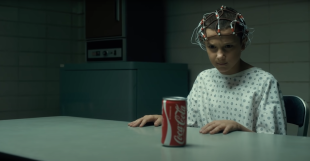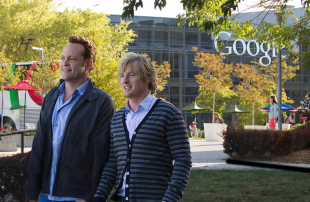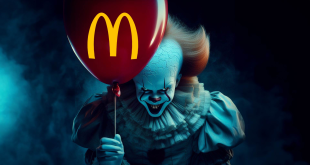You’re watching a horror flick. The tension is high. Suddenly, the protagonist takes out an iPhone. Wait, what? Yes, brands have infiltrated even the sacred space of horror and suspense! But it’s not just random; there’s a method to this madness. Let’s pull back the curtain and expose the Big Brands’ strategies that lurk in the shadows of your favorite movies.
Apple: No Villains allowed
Apple has a fascinating strategy when it comes to product placement in movies. You’ll notice that the heroes are often seen using iPhones, MacBooks, or iPads, while the villains are conspicuously absent from the Apple ecosystem. This isn’t a mere coincidence; it’s a well-thought-out plan. Apple provides its products to filmmakers for free but attaches a significant condition: villains are not allowed to use them.
This strategy goes beyond mere product placement; it’s about aligning the brand with the values of heroism, integrity, and justice. It’s a masterstroke in brand management that subtly influences your subconscious to associate Apple with all things good and just. Films like “Knives Out” serve as perfect examples. If you were keen enough, you could’ve solved the movie’s mystery just by spotting who uses an iPhone and who doesn’t.

Coca-Cola: The Elixir of Life
Coca-Cola takes a different yet equally compelling approach. While Apple focuses on character alignment, Coca-Cola aims for emotional resonance. The brand strategically places its products in scenes that evoke happiness, unity, or triumph. It’s not just about quenching thirst; it’s about quenching emotional voids.
When you see a character enjoying a Coke during a moment of victory or emotional connection, it’s hard not to feel a sense of joy or nostalgia. This strategy is brilliantly executed in shows like “Stranger Things,” where the introduction of New Coke serves as both a nostalgic nod and a moment of levity amid the suspense.
Mercedes-Benz: The Double-Edged Sword of Luxury
Then there’s Mercedes-Benz, a brand that’s not afraid to flirt with the dark side. Unlike Apple, Mercedes-Benz allows its luxury vehicles to be used by both heroes and villains. It’s a bold move that aligns with the brand’s image of power, authority, and luxury.
Whether it’s the sleek cars in “Jurassic Park” or the high-speed chases in action-packed thrillers, Mercedes-Benz is more than just a mode of transportation; it’s a status symbol. And sometimes, that status can be one of menacing authority, adding a layer of complexity to the brand’s image.
Sony: The Master of Self-Promotion
Sony stands in a unique position, being both a producer of electronics and films. This dual role allows Sony to be its own best promoter. The brand doesn’t just place its products in movies; it weaves them into the very fabric of the story. From the high-definition Sony cameras capturing investigative journalism in “Spider-Man: Homecoming” to the Sony VAIO laptops used in various action-packed scenes, the brand ensures that its products are more than just props; they’re plot devices. Unlike Apple, Sony doesn’t impose restrictions on who can use its products in films.
Villains, heroes, side characters—they’re all fair game. This lack of restriction adds a layer of realism to the movies. After all, in the real world, technology is a tool available to all, regardless of morality. By allowing its products to be used by any character, Sony subtly communicates that its products are universal, versatile, and integral to modern life.

Google: The Context King
Google takes a different route, one that’s as calculated as its search algorithms. The tech giant is highly selective when it comes to product placement, focusing on contextual relevance over sheer visibility. You won’t see Google products randomly scattered throughout a movie. Instead, you’ll find them in scenes where they naturally fit and add value. Take, for instance, the movie “The Internship,” where the entire plot revolves around an internship at Google.
The brand is not just a backdrop but a character in itself, driving the story forward. In other instances, Google products appear as problem-solving tools. By focusing on context, Google ensures that its product placements don’t just serve as advertisements but as endorsements of the brand’s utility and relevance in daily life.
Brands have found a way to haunt our favorite movies, but it’s not all bad. These strategies offer a masterclass in branding. They show us that a brand is not just a logo; it’s a story, a character, and sometimes, a hero or a villain. So, the next time you’re watching a horror flick, keep an eye out for these brands.
Read more at http://creepybonfire.com

 By
By